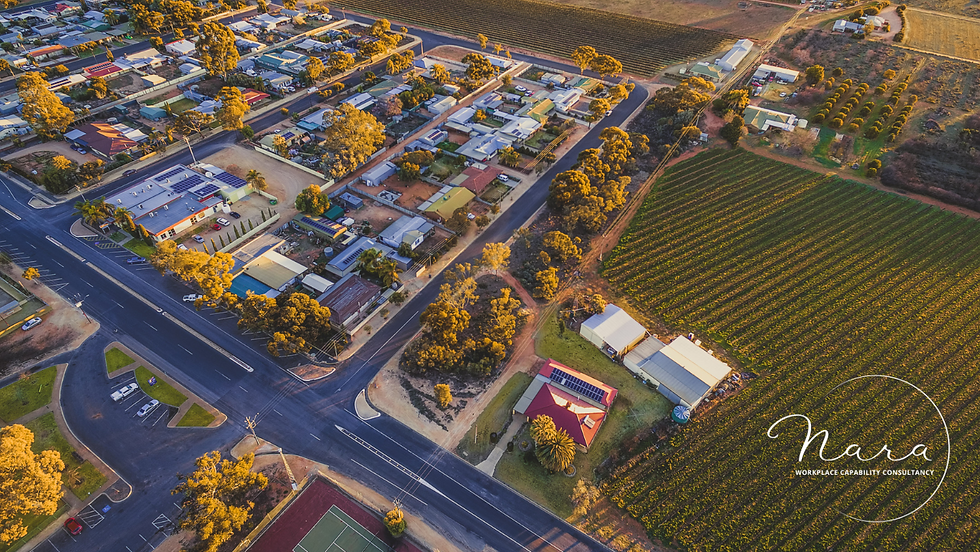Rethinking How We Grow Regional Workforces: Capability and Beyond
- Anna-Selina Young

- Aug 26
- 2 min read
The Story Behind the Skills Shortage
There is a familiar story told about regional workforces, the one about skills shortages, training gaps, and the desperate hunt for qualified people. It’s a story that’s true, but incomplete. Behind the numbers, the training programs, the job ads, there’s a quieter, deeper narrative often overlooked: the story of culture, connection, and what really makes capability thrive.
Capability In Context of the Regional Workforce
Picture a small-town business, the kind where the local high school graduate is trained and ready to step up, only to pack their bags for the city. Imagine a team where a handful of people carry the weight of multiple roles, juggling tasks beyond their job description simply because there is no one else. Succession planning? It feels like trying to build a ladder with missing rungs.

In places like this, capability is often really about the atmosphere where people actually work. Can they bring their full selves? Do they feel safe enough to speak up, to take risks, to stumble without fear? Because capability is actually more about the confidence to use your skills set in your workplace.
Why the Brain Needs Safety to Thrive
Research confirms what feels true in the gut. The brain's best work happens when it’s not under siege. When stress, uncertainty, or a toxic culture create threat, creativity and clarity evaporate.
It doesn't matter how resilient you are, when your brain becomes overloaded with stress and anxiety it takes a real hit. Australia’s new workplace laws are catching up to this fact, recognising that managing psychosocial risks is as essential as physical safety.
Growing Capability as Culture
This understanding flips the script on workforce development. It’s no longer enough to just check boxes on technical skills. The question becomes: what kind of environment nurtures those skills so they flourish? What leadership practices foster trust and adaptability? What systems simplify rather than suffocate?
For many regional businesses, these aren’t easy questions, but the answers matter more than ever. Because when people feel truly supported and included, they don’t just show up, they bring their best ideas, their energy, and their loyalty. And in places where every role counts, that can make all the difference.
A New Approach to Workforce Strength
So let's say it’s time to rethink capability. Not as a problem to fix with training budgets, but as a living culture to cultivate. One where skills and humanity come together, where the whole is greater than the sum of its parts.
If this feels familiar, it’s worth having that conversation. Because building a workforce that lasts is less about chasing talent and more about growing it, together.
—
¹ PwC (2023). Workforce of the Future: Navigating the skills gap
² Australian Institute of Health and Welfare (2022). Workplace Mental Health and Psychological Safety
³ Safe Work Australia (2023). Model Code of Practice: Managing psychosocial hazards at work





